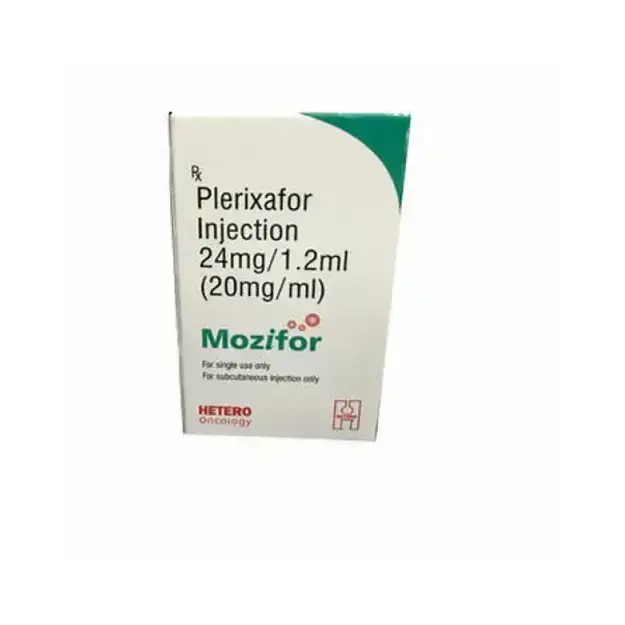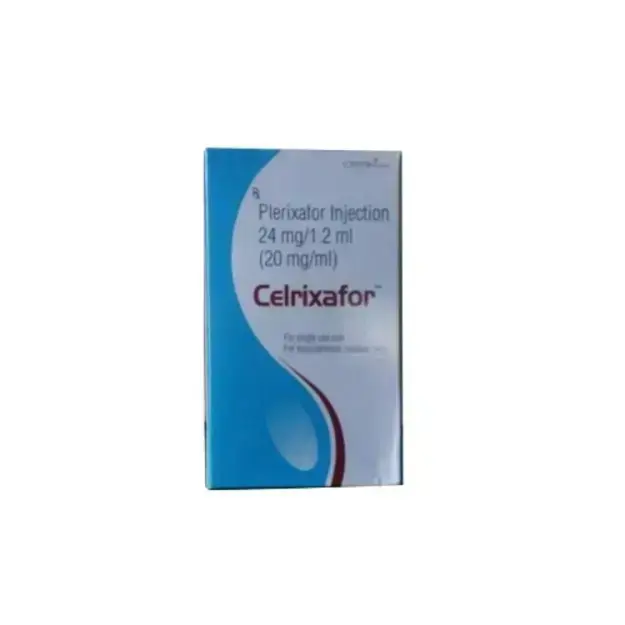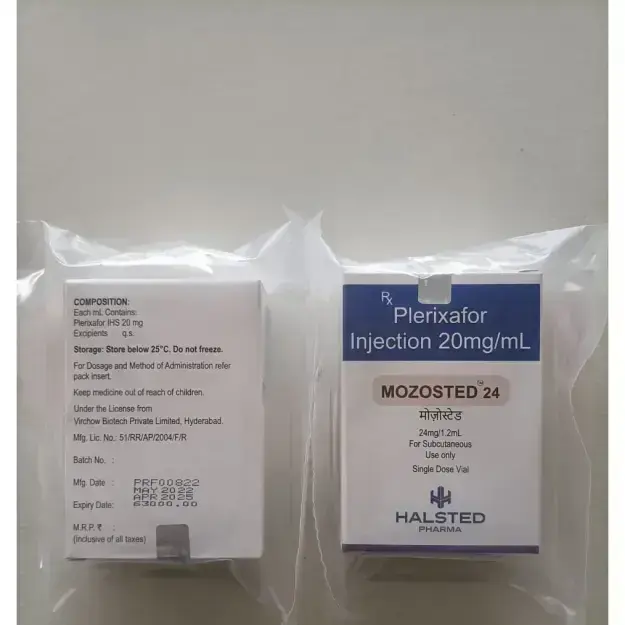Adstem is a brand which consists Plerixafor, is an immunostimulant primarily used to mobilize hematopoietic stem cells (HSCs) from the bone marrow into the bloodstream. This process facilitates the collection of HSCs for autologous transplantation in patients with non-Hodgkin's lymphoma (NHL) and multiple myeloma (MM).
Mechanism of Action
Plerixafor functions as an antagonist of the C-X-C chemokine receptor type 4 (CXCR4). Under normal conditions, the interaction between CXCR4 and its ligand, stromal cell-derived factor-1 alpha (SDF-1α), retains stem cells within the bone marrow. By inhibiting this interaction, plerixafor disrupts the anchoring of stem cells, prompting their release into the peripheral blood.
Plerixafor is a valuable agent in the mobilization of hematopoietic stem cells, particularly when used in conjunction with G-CSF, offering significant benefits in the preparation of patients for autologous stem cell transplantation.
Clinical Use
In clinical settings, plerixafor is administered in combination with granulocyte colony-stimulating factor (G-CSF) to enhance the mobilization of HSCs. This combination has been shown to increase the number of stem cells collected and reduce the number of apheresis sessions required.
For instance, in patients with MM, more than 50% achieved the target collection in just one day when treated with plerixafor and G-CSF, compared to four days with G-CSF alone.
Administration and Dosage
Plerixafor is administered via subcutaneous injection, typically at a dose of 0.24 mg/kg. The injection is given approximately 11 hours before apheresis, and the treatment can be repeated for up to four consecutive days.
Prior to initiating plerixafor, patients receive G-CSF daily for four days to prime the bone marrow.
Side Effects
Common side effects of plerixafor include gastrointestinal symptoms such as nausea, vomiting, diarrhea, and abdominal pain. Patients may also experience dizziness, headache, fatigue, and injection site reactions like redness or swelling.
Serious but less common adverse effects include splenic enlargement or rupture, thrombocytopenia, and potential allergic reactions.
Contraindications and Precautions
Plerixafor is contraindicated in patients with hypersensitivity to the drug or its components. Caution is advised in individuals with renal impairment, as dosage adjustments may be necessary.
Due to potential teratogenic effects, women of childbearing potential should use effective contraception during treatment. It is also recommended to avoid breastfeeding while receiving plerixafor.
Pharmacokinetics
After subcutaneous administration, plerixafor is rapidly absorbed, reaching peak plasma concentrations within 30 to 60 minutes. Approximately 58% of the drug binds to plasma proteins.
Plerixafor is not significantly metabolized and is primarily excreted unchanged by the kidneys, with a half-life of about 3 to 5 hours.
X












